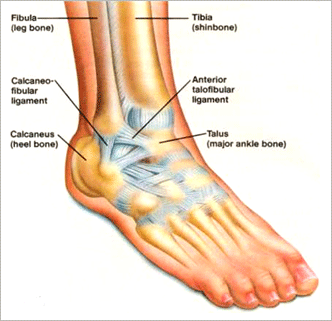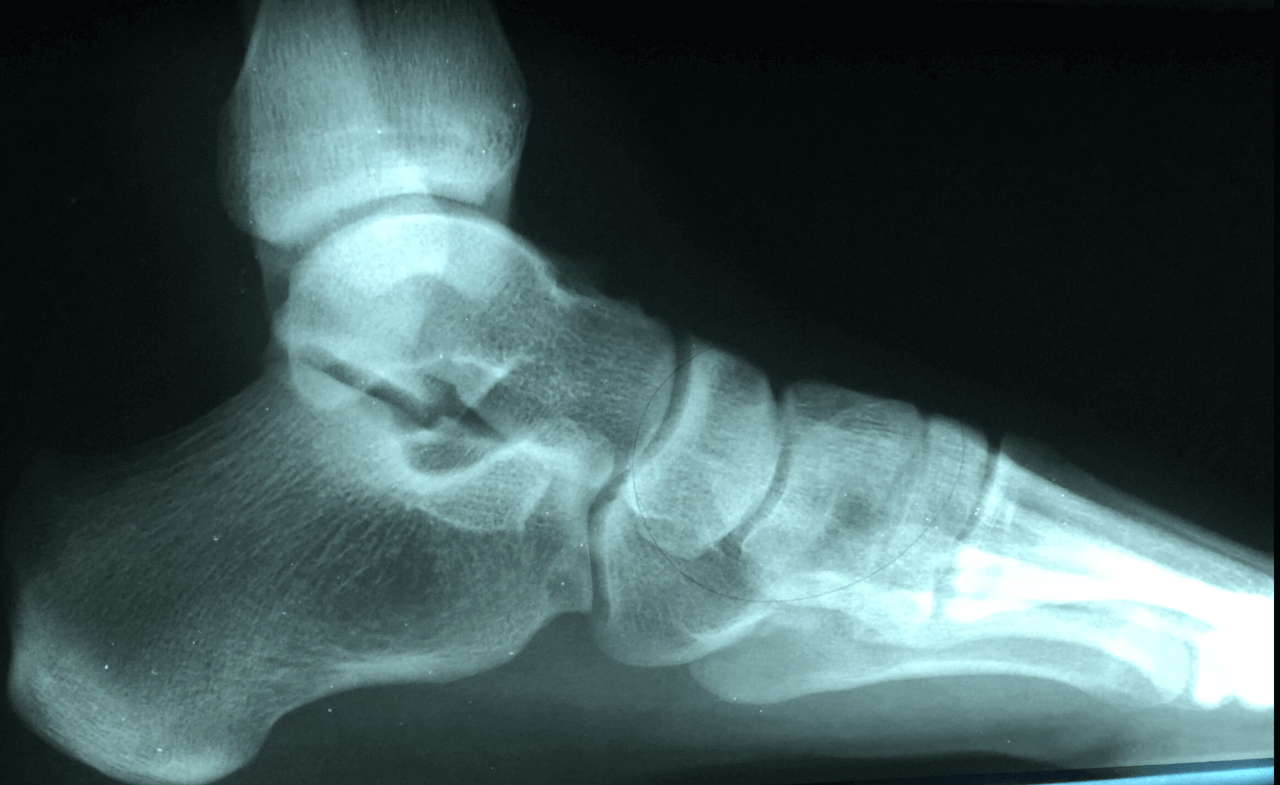ankle pain
Displaying items by tag: ankle pain
Dr. Brandon Nelson, A Board Certified Physician & Surgeon, Discusses Ankle Pain

Dr. Brandon Nelson, A Board Certified Physician & Surgeon, Discusses Ankle Pain
Ankle pain is a large topic to discuss in a blog but I will focus on two of the most common causes. The vast majority of ankle pain follows an injury like an ankle sprain or an ankle fracture. When looking at an ankle sprain the most likely long term causes of pain are soft tissue issues. When looking at ankle fractures with time bone or joint pathologies can occur. Let us take a look at a common ankle sprain and what can be the long term results of untreated sprains.
Ankle sprains are one of the most common injuries that occur in the lower extremity. The vast majority of sprain occurs in an inversion type fashion or a rolling in of one’s foot. This puts a lot of strain on the ligaments and tendons on the outside of the ankle or the fibular side. We often see ligament tears or tendon tears that develop. These can lead to pain with activities or with certain movements. It is important to seek the help of a foot and ankle physician early with ankle sprains. It is amazing the amount of issues I see that could have been avoided by seeing a physician when the sprain occurred. It seems that the adage of “PRICE” or protect, rest, ice, compress and elevate just does not provide enough healing for athletes or active patients.
Ankle fracture on the other hand usually does seek medical intervention. It really depends on the type of fracture some patients will require surgery to realign the bones and some will do find with just a period of non-weight bearing. Ankle fractures usually have higher trauma velocities and therefore can cause more damage to the bones. One of the most common long term effects of a fracture can be arthritis. With fractures you can change the weight distribution in joints and over time this can wear away cartilage. Having all fractures evaluated by a medical professional with experience in that area is key.
I cannot express the importance of early intervention and seeking the advice of a foot and ankle physician will improve outcomes and long term functionality. If you have had an injury or are currently injured I can help.
If you are experiencing foot or ankle pain, please give us a call at 425-391-8666 or make an appointment online today.
Sincelry,
Dr Brandon Nelson
Dr. Brandon Nelson, Board-Certified Foot and Ankle Physician and Surgeon, Discusses Heel pain and Plantar Fasciitis

There are quite a few causes of heel pain of heel pain and it can vary by age. We tend to break it up by pediatric meaning anybody less than 18 and adult heel pain anybody over 18. Regardless of the age and the patient heel pain can be extremely challenging and very painful. We see quite a few adults and children that are highly athletic and struggling with resolving their heel pain.
Heel pain and children is typically sourced to a disorder called calcaneal apophysitis. This is a condition where the growth plate of the heel is affected. Often times with young man this occurs between the ages of 14 and 16 and for young limited between the ages of 12 and 14. We see a high correlation with sport activities especially cleated sports. It is important to have an x-ray and follow-up with the foot and ankle physician in order to evaluate the other underlying causes.
Adults tend to have pain that occurs in the morning especially when getting out of bed or after activities. We see the majority of people have often increased their exercise routine or started a new activity. The #1 cause of heel pain and adults remains plantar fasciitis. The plantar fascia is the main supporting network of the foot and can become tired and worn out with age. Again it is important to seek help from a foot and ankle physician to determine whether or not this is the underlying cause.
Heel pain in both pediatrics and adults is highly treatable and early intervention is better. The majority of these causes can be distinguished of the first visit and felt can be implemented immediately. If you’re having heel pain please make an appointment today and I can help.
Sincerely Dr. Brandon Nelson
Board-Certified Foot and Ankle Physician and SurgeonDr Timothy Young Talks About Tight Calves and Foot Problems

Dr Timothy Young Talks About Tight Calves and Foot Problems
As mentioned, the mechanical load on the foot from the calf and ultimately the Achilles is tremendous. So, with equinus ( a tight calve and or Achilles) there are many problems. Think of a woman who wears high heel shoes every day for many years and over time the calf gets less flexible. Now with that tight calf, her gait has changed. As she walks, with each step going forward that tight calf pulls, and her heel comes off the ground early. Early heel off with gait leads to early transfer of weight and force to the front of the foot. Over time, this extra pressure on the front of the foot can cause problems. This is like the childhood toewalker, but with adult body size and weight.
If you are experiencing any foot or ankle pain, give us a call today at 425-391-8666 or make an appointment online.
Exercises and Activities After Foot Problem or Injury

Dr Timothy Young discusses how to resume exercise and sports
In some cases it is possible to return to exercise and normal activities fairly soon after an injury or foot/ankle problem. With many acute injuries it is necessary to wait 3–4 weeks or longer, before attempting to return to activity. Depending upon the problem and level of recovery it may be necessary to wait until there is significant progress with the healing and recovery.
Pain is the key. Use pain as your guideline. Sometimes our patients will not know if they are okay with their activity level or exercises until later that day or even the following day. For example let's say you are a "walker" who would do 3-5 miles "preinjury" and you decide to return to your walking. That day you're fine but the next day may be telling, you can tell if you did too much too soon. In this case you know it is too soon to return to activity and you have to give it more time, possibly 1 week or longer. Listen to your body, and let pain help guide you.
Start slowly! After a foot problem or injury when you are ready to start resuming some activity, always start at a reduced level. For example if you typically walk 3–5 miles then try walking just 1 mile when you first return to activity. Do this for the first week and again use pain as your guideline, if all goes well then add a half mile the next week and continue that pattern.
Consider crosstraining: Aqua jogging and a stationary bike are often ways that you can do exercises without any impact. When using the stationary bike it is often necessary to use your heel and not the front of your foot on the injured side.
Use taping and braces: We have handouts on foot and ankle taping (KT tape). Taping and braces often allow you to get back to activity sooner than you would otherwise. Often you don't have to tape every day, just on those days were you will be on your foot much more or when you are doing weigh bearing exercises.
Google Business Reviews Error Notice!
Read Below Steps Carefully :
1. Check your API key and PLACE id. May be it is not right. Make sure it is correct one.
2. This message commonly shows when api key is exceeded daily request quota for this API or there is no active billing account for this API. Because according to Google there is a limit for free API key. If it exceeds they ask for billing.
3. To know more about Google Pricing , Check here : Google Pricing
4. You can create your Google API key here
5. Must use a right PlaceID. Get PlaceID here
6. One important thing, Don't forget to add billing account to Google. Must check what Google says here
7. If you still find issue , then check first if your Business registered with Google or not. Read more about it here
8.Still find issue, then contact developer : info@aaextensions.com or ashik685@gmail.com



